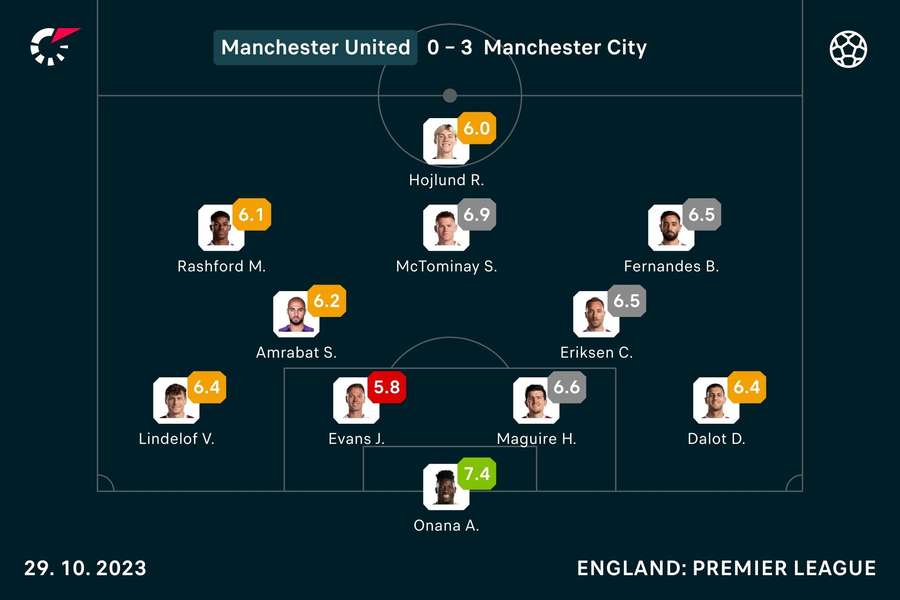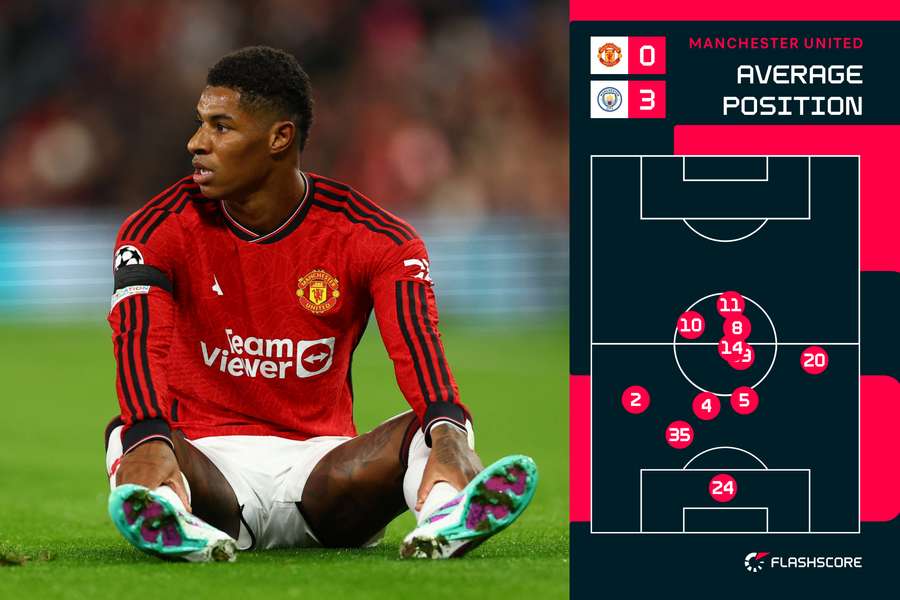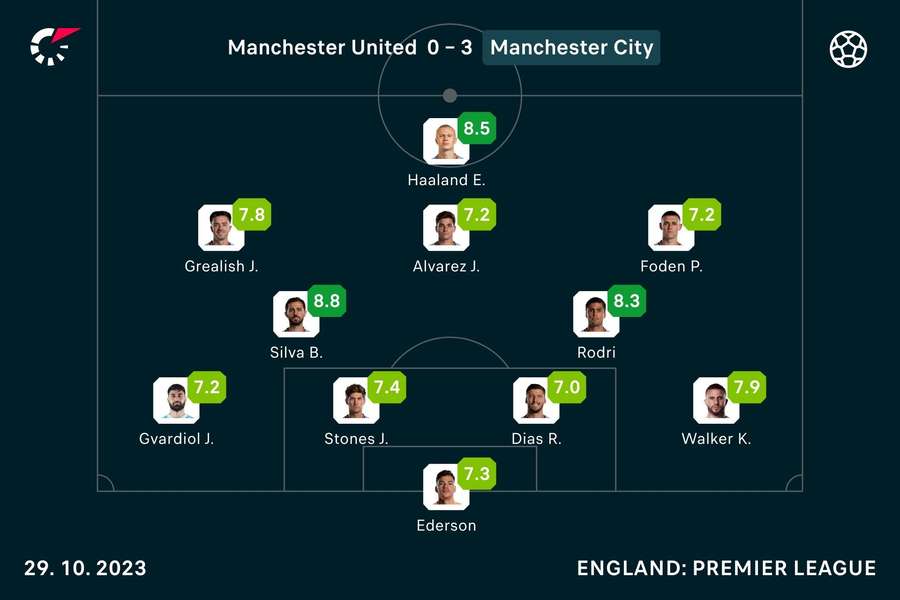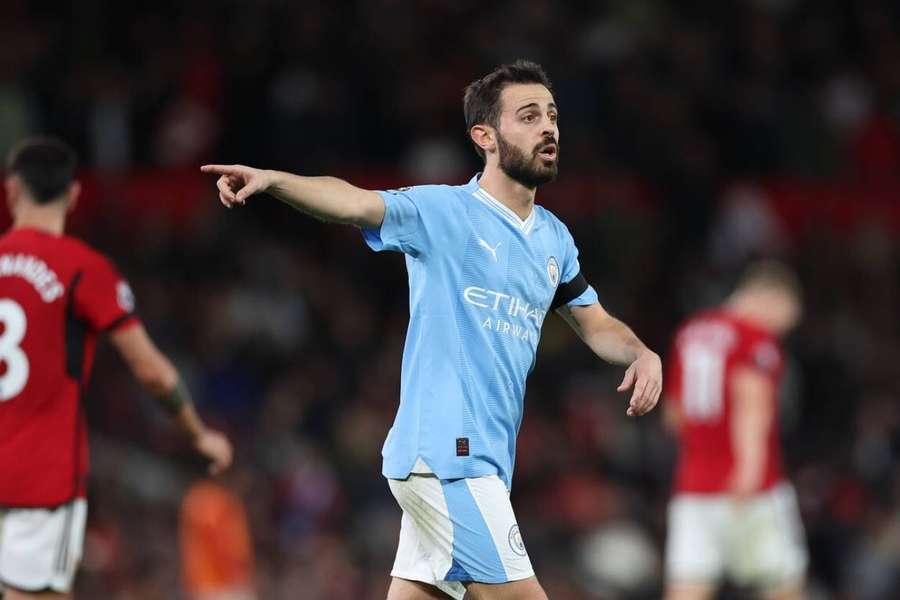Manchester City proved too strong for their rivals Manchester United, beating them 3-0 at Old Trafford. A brace from Erling Haaland and a Phil Foden late goal was the difference for the Citizens, but who stood out for City and what did United try to do - unsuccessfully - to nullify their opponents?
UNITED'S FAILED GAME PLAN?


Manchester United, as you can see from the immediate image above, looked to make things compact in central areas, and force City to build up from the wider areas, using fullbacks.
This is a very similar approach to Mikel Arteta's Arsenal when they beat City 1-0 before the international break, and this could be what Erik ten Hag had seen as a way to nullify Man City.
City had to adapt inside the opening 20 minutes, as they began by trying to play narrow, with a 3-2 build up with John Stones joining Rodri in a midfield Pivot. However, with United packing the central zones, City had to begin to progress the ball into midfield down the flanks using the fullbacks in a slightly wider build up platform.
This saw the ball going to the fullbacks and wingers before finding its way into the pivot players of Rodri and Stones in slightly more advanced areas.
However, the game plan to keep City out fell early, with a penalty being awarded in the first half that Erling Haaland put away. This made the game slightly more open as City knew they could bait United to press slightly higher, but United did still stick to pressing central areas and leaving wider areas unoccupied.
This resulted in City's second goal with a brilliant cross to the back post from Bernardo Silva picking out Haaland to score his second of the game. Once the second goal went in, United's compact nature fell away slightly, opening the spaces and eventually leading to Foden scoring City's third and securing the victory.
EASY FOR CITY DEFENSIVELY

City set up in a 4-2-3-1, which became that familiar 3-2-5 that we are used to seeing with this City side.
This usually means the space to attack is down the flanks, looking to use the wingers as outlets and get 1v1 with the defenders in transition scenarios.
However due to Manchester United playing so compact, their wingers were in central areas and were therefore no trouble at all for the City defenders.
Marcus Rashford was the only natural winger on the pitch for United, with Bruno Fernandes playing on the right, and drifting inside. This way of playing nullified Rashford and didn't allow him to challenge the City defenders in the place they are most vulnerable.
BERNARDO KEY FOR CITY
The key to this game was Bernardo Silva for Manchester City, who realised the game state, saw where United were pressing, and took control by drifting into half space areas to progress City through the lines, and begin to pick the passes.
Silva of course produced the assist for Haaland's second with a brilliant cross to the back post, but he also made three key passes, created three big chances, completed five out of six long balls, completed two out of two dribble attempts and won five of his eight ground duels.
His dynamic movement and free positioning was the thorn in United's side, as he started to drift between the pressing traps and allow City to play in central zones, as well as create overloads out wide. He would form passing triangles with both wingers and pivot players, drifting side to side to progress City's attack.
United couldn't handle him, and once Silva had realised United's strategy was to cut the space centrally, he knew he could roam freely unopposed to collect the ball, and receive the ball in dangerous areas.
CONCLUSION
In conclusion, United wanted to almost replicate Arsenal's defensive plan to force City into wide areas and deal with crosses into the box, stopping any central progression.
However, a few scenarios such as the penalty decision and Bernardo Silva's brilliance stunted Erik ten Hag's plan and allowed City to take the ascendency and win the game with relative ease in the second half.
On another day if United had taken the first few chances that fell to them before City had adjusted, it could have been a completely different story. But once City had adapted and found the goal to go in front, it only looked to be going one way.




